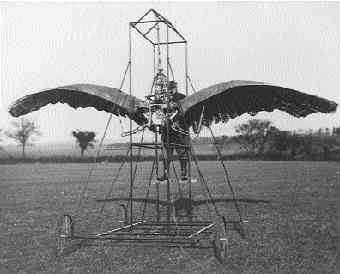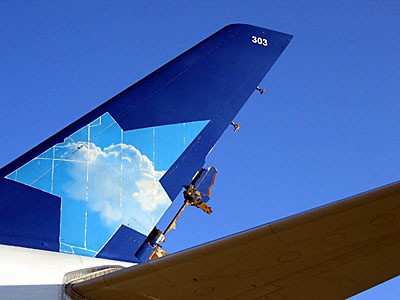Toronto Sun's Eric Margolis Opens Mouth, Removes All Doubt
By ANN Senior Correspondent Kevin "Hognose" O'Brien
Part One
 One of the great things about being
a columnist is also, potentially, the worst thing: lots of people
get to read your opinion. If, on the other hand, you utter a
nonsensical opinion at a cocktail party, there's a limit to the
number of people who'll think you're an idiot, and your spouse will
probably drag you out before you can completely destroy your
reputation. But when it comes to being a columnist for a major
metro daily, those limits do not reply.
One of the great things about being
a columnist is also, potentially, the worst thing: lots of people
get to read your opinion. If, on the other hand, you utter a
nonsensical opinion at a cocktail party, there's a limit to the
number of people who'll think you're an idiot, and your spouse will
probably drag you out before you can completely destroy your
reputation. But when it comes to being a columnist for a major
metro daily, those limits do not reply.
Consider, then, Eric Margolis of the Toronto Sun, the latest
self-proclaimed aviation safety expert. Margolis is usually more at
home licking the boots of various third-world dictators, most
recently Syria's; he seems to have a thing for uniforms. But now
he's playing in our sandbox.
True, the Sun is to newspapers what the Blue Jays are to
baseball, but let's consider it a major newspaper in the same way
Americans bear with Canadians calling 82 cents a "dollar:" it's a
small thing, but vital to Maple Leaf Pride [the management of this
publication would like to take this opportunity to remind you that
the opinions expressed herein regarding Canada are strictly those
of the author. The rest of us think Canadians are, for the most
part, "wicked cool"].
 In Margolis's March 20th Column for
the Sun, "A-300s, 310s Likely Flawed," Margolis solves all the
problems of World Air Safety, while making a horse's ass of
himself. His themes can be reduced to Orwellian slogans: This type
good, that type bad; Four engines good, two engines bad; three
pilots good, two pilots bad. Holy Napoleon, Batman, this Canadian
Snowball is a nutball. But don't take my word for it! Consider a
few of Eric's. Words, that is; his are in quotes. My replies to his
comments are in italics.
In Margolis's March 20th Column for
the Sun, "A-300s, 310s Likely Flawed," Margolis solves all the
problems of World Air Safety, while making a horse's ass of
himself. His themes can be reduced to Orwellian slogans: This type
good, that type bad; Four engines good, two engines bad; three
pilots good, two pilots bad. Holy Napoleon, Batman, this Canadian
Snowball is a nutball. But don't take my word for it! Consider a
few of Eric's. Words, that is; his are in quotes. My replies to his
comments are in italics.
"Alas, as is the case with existing aircraft, passengers will
still be denied adequate fresh air or moisture, a serious health
risk on long flights."
No air -- that's why they unload thousands of dead, cyanotic
pax every day. That's why the airlines are struggling, they
asphyxiated all the frequent flyers. And as far as moisture -- I
buy a couple bottles of water and keep them in my carry-on bag. I
guess Aero-News's expense account is more generous than the Sun's.
Or maybe its the extra 18 cents in those Yank dollars.
"Last week, the 9-meter-high tail of a Canadian Air Transat
Airbus twin-engine A-310 outbound from Cuba fell off. That's right:
Fell off."
 That's wrong, actually. A rudder
does not a tail make (or all the souls on that plane would now be
flying on their own wings). And it's far from certain what happened
to it -- "fell off" is one possibility, "beat itself to pieces" is
another. The right people are studying that now -- real engineers,
with engineering degrees and everything! We writers ought to show
them some deference.
That's wrong, actually. A rudder
does not a tail make (or all the souls on that plane would now be
flying on their own wings). And it's far from certain what happened
to it -- "fell off" is one possibility, "beat itself to pieces" is
another. The right people are studying that now -- real engineers,
with engineering degrees and everything! We writers ought to show
them some deference.
"Its superb pilots managed to use wing and tail flaps to return
to Cuba safely."
First place, we don't know if the pilots contributed to the
problem in the first place (we hope they didn't). Not to diminish
the skill they used to return the plane safely to terra firma, but
the truth is rudders are not all that heavily used and it's quite
possible to land without one. We would hope that any pair of pro
pilots could and would do as well if it came to that. Second place,
anyone finding a set of "A 310 tail flaps" is invited to send them
to Aero-News, POB 9132, Winter Haven FL 33883, freight collect, and
we will proudly display them in the lobby. Right next to the canopy
lights from Jim's skydiving days, and the jar of landing grease
Hognose's first instructor sent him out for. Third place, the very
notion of someone who thinks "wing and tail flaps" are what got the
plane back to Veradero safely, pontificating on air safety, is a
bit like the Archbishop of Canterbury getting advice on church
governance from Keith Richard.
Wing and tail flaps, indeed. What does he think it is -- an
ornithopter?

"In 1985, pilots of a Japan Airlines 747 whose tail controls
were wrecked by an explosion lost control and crashed."
To rewrite that sentence free of factual error would give
you something like, "In 1985, a JAL 747 crashed." What actually
happened was that a wrongly repaired bulkhead failed, causing the
vertical tail structure to fail. (In this case, the vertical
stabilizer and rudder DID "fall off"). This, and the exsanguination
of the hydraulics, left the pilots with very, very little control
(tail or otherwise), and they did crash in mountainous terrain. But
there was no explosion.
"Last week's incident was Transat's second aeronautical miracle
after a 2001 flight ran out of fuel at mid-Atlantic..."
Miracles are where you find them, but if the pilot had
noticed he was pumping vast quantities of fuel overboard, he might
not have had to do the Canadian Jetliner Gliding Championships
thing. "A pilot uses his superior judgment so as not to have to
make an unseemly display of his superior skill." At least the
Canadian 767 glider champion BEFORE the Air Transat guy, an Air
Canada pilot, had the excuse of the bewildering confusion caused by
national ambivalence about language and measurements.
"The Airbus A-300 and A-310s should be grounded until their
tails can be proven 100% safe."
First, "until [fill in the blank] can be proven 100% safe"
is forever. Margolis's bathtub can't be proven 100% safe, but one
hopes he hasn't given up on that. There is no 100% safe, there are
only probabilities, and anyone who talks in terms of 100% safety is
either a politician, a plaintiff's attorney, or a fool. I don't
believe that Mr Margolis is a lawyer. Second, no one has proven
that there is anything wrong with the tail per se (in the AA 587
accident, though, it was pretty clear that there were some big gaps
in information in the pilot community about what rudder usage was
safe). Second, "proven 100% safe" expects one to prove a negative,
a common logical fallacy argued by the poorly educated. Third, so
far Eric hasn't shown the degree of knowledge needed to be making
airworthiness decisions. Fourth, as I'll explain below, most A-300s
don't even have this design of tail.
"When these aircraft were introduced 15-20 years ago, their
tails, made of lightweight composite fibers, were a radical
innovation."
Oi, radical. I have a composite part of a radical UH-1B in
my war room, dating from about 1965 -- 40 years ago. And the Airbus
A300 entered service in 1974. The A310 started development in '78
and first flew in '82. If this guy wants to an airplane engineer,
he's going to need to do better with arithmetic operations like
subtraction. Imagine what a differential equation would do to him.
I was going to send him one, but fortunately for Margolis, the
Geneva Convention forbids it.

"It's now clear the 300-series tails might have defects, perhaps
along their hinge joints."
Thanks, I'll forward this to Airbus Industrie, because it's
not nearly as clear to them, and they are the guys investigating
this. They were waiting for Eric to weigh in. Not. By the way, all
A300s except the A300-600 have a different tail design from the
A310. That dash number is a big thing with airliners. Ask any
737-200 pilot trying on an -800 for the first time.
In the next part of this examination of Margolis's abominable
column, which will run Monday, we'll pick up right here by looking
at the failure of the tail structure on AA 587 and how it differs
from what happened to Air Transat -- and how both differ from what
Margolis seems to think is going on. He gets further and further
off plumb as he goes back in history to look at some other airline
mishaps, too. And we're not anywhere near finished making fun of
him, so stay tuned.
 ANN's Daily Aero-Linx (05.06.25)
ANN's Daily Aero-Linx (05.06.25) ANN's Daily Aero-Term (05.06.25): Ultrahigh Frequency (UHF)
ANN's Daily Aero-Term (05.06.25): Ultrahigh Frequency (UHF) ANN FAQ: Q&A 101
ANN FAQ: Q&A 101 Classic Aero-TV: Virtual Reality Painting--PPG Leverages Technology for Training
Classic Aero-TV: Virtual Reality Painting--PPG Leverages Technology for Training Airborne 05.02.25: Joby Crewed Milestone, Diamond Club, Canadian Pilot Insurance
Airborne 05.02.25: Joby Crewed Milestone, Diamond Club, Canadian Pilot Insurance







